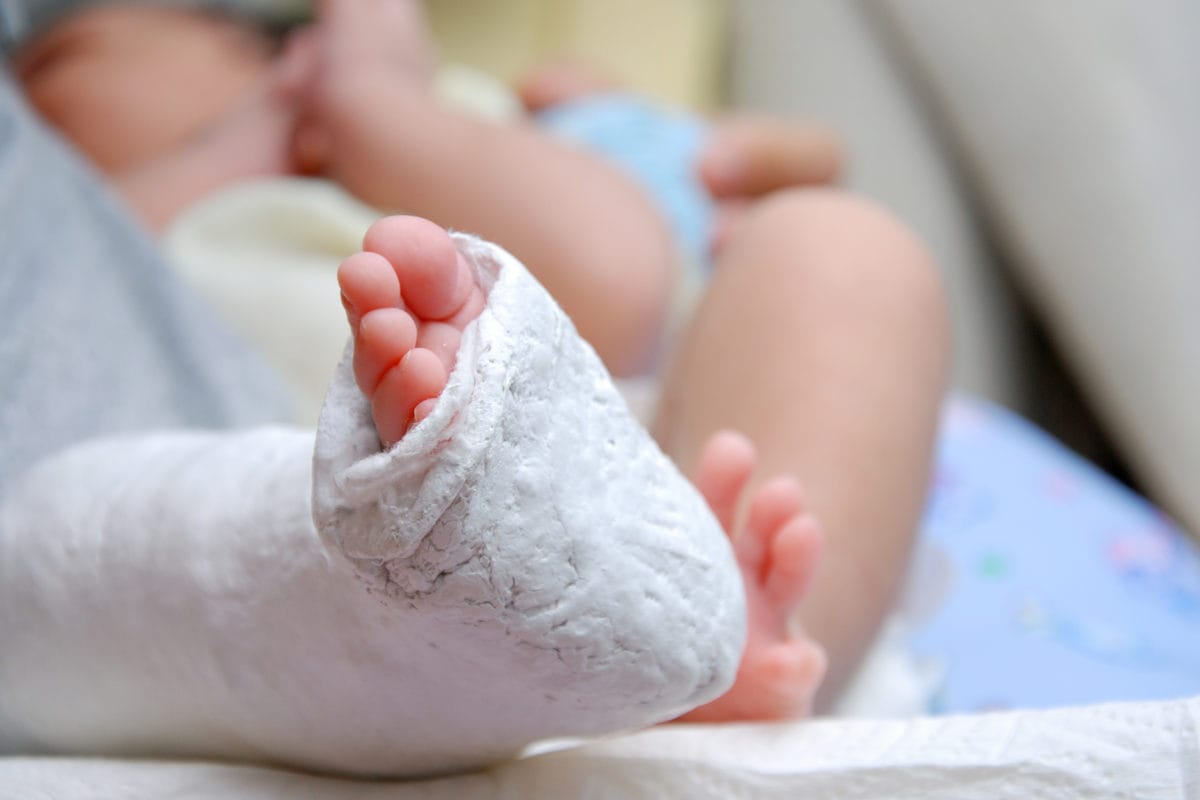Humans are able to move around with the help of limbs. Lower limbs consisting of the thigh, knee, ankle and foot enable humans to do many things in life. It is important to take care of the limbs although at most times people take it for granted. If you ask a doctor, you would know that there are diseases causing the lower limb to not function properly. Such disease may start off in childhood and when left untreated, can cause great discomfort to the person. One of the diseases that can cause this is club foot.
Club foot, also known as talipes, is a condition where the feet are turned inwards. Clubfoot occurs around 1 in every 1000 live births. This makes it a common congenital defect of foot deformities. These deformities that present at birth may go unnoticed unless it is severe which is marked by the bottom of the foot facing sideways or upwards. It may be diagnosed at birth but cases can be first discovered during ultrasounds examination during pregnancy especially between 18 to 21 weeks. Both feet are affected in half of the children with clubfoot and boys are likely to have this deformity compared to girls.
Clubfoot happens when the large tendon of the back of the ankle known as the Achilles tendon is too short and tight. This leads to the foot twist inward. It is not known why some children develop this condition but it is stipulated to be a condition that may be inherited. This means a risk is high for those with a family history of clubfoot. Club foot is not painful for babies or infants but as time goes by, it can lead to pain and make the child have difficulty walking.
Clubfoot is divided into two groups. The first group is known as isolated clubfoot. It is also known as idiopathic clubfoot and is the common form of deformity as no other medical problems are presented. The second group is known as non-isolated clubfoot which means the club foot occurs in combination of other health conditions or neuromuscular disorders such as spina bifida. The importance of knowing the clubfoot belongs to which group is for healthcare professionals to expect the outcomes and treatments. Non-isolated clubfoot may be more resistant to treatment, need a longer course of nonsurgical treatment and may require multiple surgeries. By knowing this fact, it can help parents be prepared for what will happen to their child and what to do next.
Clubfoot appearance can be mild to severe. It may occur at one side of the feet (unilateral) or both sides of the feet (bilateral). The foot appeared to be turned inwards or pointed downwards. Deep crease on the bottom of the foot is often found in the club foot. The foot and leg are slightly shorter than normal in the limbs affected by clubfoot. The calf of the limb affected by clubfoot is thinner due to underdeveloped muscles as the child tends to avoid stepping on or utilising the affected limbs.
Parents might wonder if clubfoot can be corrected. Yes, it can be corrected but it is worth noting that it may not be fully corrected. Treatments available do help the child to grow up and be able to wear ordinary shoes. This alone means that the child is able to have an active life just as any other children of their age. One thing for sure, clubfoot will never improve without treatment. An untreated clubfoot will lead the children to walk on the outer edge of the foot and not use the sole. These children tend to develop painful calluses which makes walking difficult. The pain can last throughout their lifetime and often so limit their ability to do many activities. The child also may have emotional distress or self-esteem issues knowing they would not be able to wear shoes or buy shoes just as other normal people do.
Treatments aim to help the feet become functional and pain-free. This will help patients to stand and walk on the sole of the foot flat on the ground. Ultimately, patients will be able to have feet and do daily life routines just as other normal people can. Treatment typically starts within 1 to 2 weeks after the baby is born. Initial treatment usually starts with nonsurgical treatment regarding how severe the deformity is. Ponseti method is the main treatment for club foot. This involves gently manipulating and stretching the baby’s foot into a better position to gradually correct the deformity. Then, the foot will be placed in a long-leg cast. These processes are repeated every week until the foot is largely improved. For most babies, it takes 6 to 8 weeks to see improvement. After the cast is taken off, most babies need a minor surgery operation known as tenotomy to loosen the Achilles tendon. A new cast will be applied to the leg to protect the tendon as it heals. This will take around 3 weeks. After successful correction with casting, babies will need to wear a brace for several years to keep the foot in proper position and maintain the correction.




